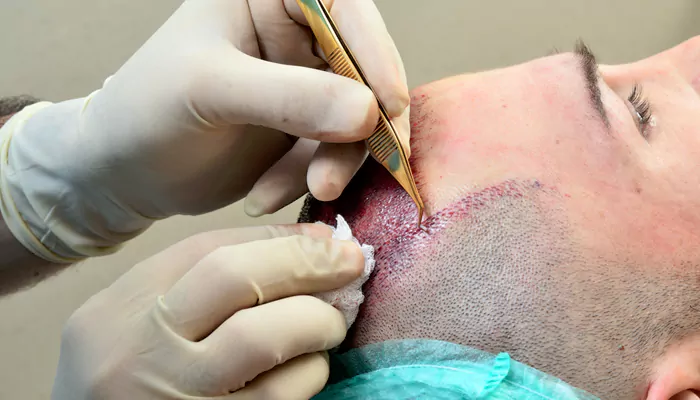
Hair transplantation has become an increasingly popular procedure for those looking to address hair loss or thinning hair issues.
This surgical technique involves moving hair follicles from the donor site to a bald or balding part of the body, called the recipient site. While it offers a permanent solution for hair restoration, potential patients should be aware of the side effects associated with the procedure. Understanding these can help in making an informed decision and preparing for what to expect post-operation.
Bleeding
One of the immediate side effects that can occur during or after the hair transplant procedure is bleeding. While surgeons take great care to minimize this risk, small incisions are made in the scalp, which can lead to bleeding. In most cases, this is minor and can be controlled with simple pressure, but it’s essential for patients to follow post-operative care instructions to prevent excessive bleeding.
Infection
As with any surgical procedure, there’s a risk of infection following a hair transplant. The risk is generally low due to the sterile techniques employed during the surgery, but it’s crucial for the surgical site to be kept clean and for patients to follow all post-operative care instructions provided by their healthcare provider to minimize this risk.
Swelling
Swelling of the scalp, forehead, and sometimes around the eyes is a common side effect experienced by many patients following a hair transplant. This typically occurs within the first few days post-surgery and usually subsides within a week. In some cases, doctors may prescribe medication to help reduce swelling.
Scarring

Scarring can occur with any surgical procedure, and hair transplantation is no exception. The extent and visibility of scarring depend on the technique used (Follicular Unit Extraction [FUE] or Follicular Unit Transplantation [FUT]) and the patient’s healing ability. FUT, for instance, tends to leave a linear scar where the strip of scalp was removed, whereas FUE leaves small, round scars that are generally less noticeable.
Numbness
A temporary loss of sensation in the operated areas of the scalp is another side effect of hair transplantation. This numbness may last from a few weeks to a few months, depending on the individual’s healing process. While it’s usually temporary, it’s important for patients to be aware of this possibility.
Itching
Itching is a common side effect experienced by patients as the surgical sites heal. While it can be a nuisance, it’s important not to scratch the areas to avoid damaging the transplanted hair follicles and risking infection. Mild shampoos or moisturizing oils may be recommended by your surgeon to help alleviate itching.
Folliculitis
Folliculitis, or the inflammation of hair follicles, can occur as the new hair begins to grow. This can appear as small pimples around one or more hair follicles. Most cases of folliculitis are mild and can be treated with antiseptic washes or creams, but severe cases may require antibiotics.
Shock Loss
Shock loss refers to the temporary shedding of the transplanted hair or even some of the existing hair in the recipient area. This can be alarming, but it’s a normal part of the healing process and is usually temporary. The hair typically begins to regrow within a few months.
Hair transplantation can significantly impact self-esteem and quality of life for those struggling with hair loss. However, like any medical procedure, it comes with potential side effects. Being informed about these can help set realistic expectations and prepare for the recovery process. Most side effects are temporary and can be managed with proper care and follow-up. It’s crucial to choose a reputable and experienced surgeon and to follow their guidance before and after the procedure to minimize risks and ensure the best possible outcome.












